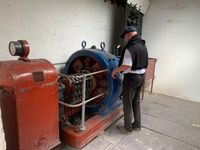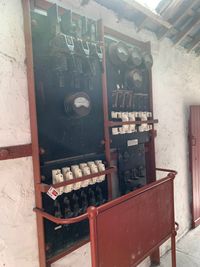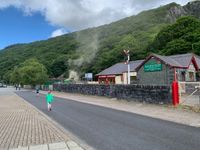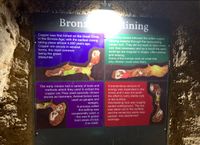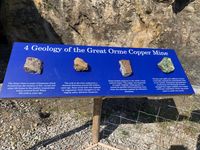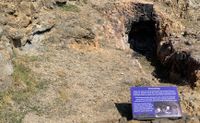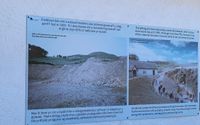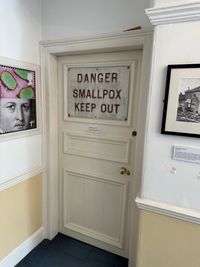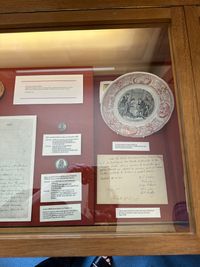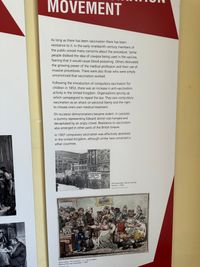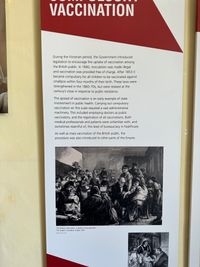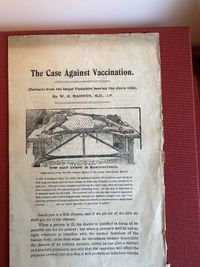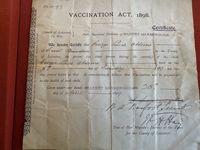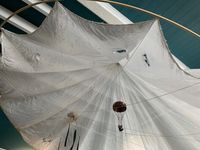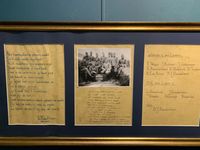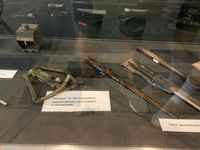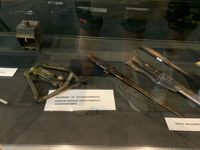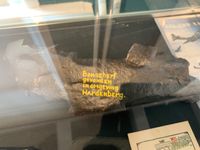Honors World History
- prehistoric societies worldwide and how they relate to the prehistoric societies in the Americas.
- bronze and Iron Age societies, with a special focus on China, the Middle East, Northern Africa and Europe.
- the rise and fall of the Roman Empire.
Some images of my excursions
Slate Museum
I visited a slate mine, that was in use until the middle of the 20th century and has now been turned into a museum. The workers used to be carried to the mine from the surrounding villages with a special train and many lived in properties on or near the area of the mine. They had some of the original houses transferred to the museum grounds and had them arranged according to the different styles of furniture and technology of the different times during the 20th century. As many fossils can be found, these were also on display in the museum.
Great Orme Copper Mine
I was in the Great Orme copper mine, where people dug by hand during the Bronze Age. I was in the quarry and it was utterly unimaginable, that people carved that mine out by hand, with stone and maybe bronze tools. Many of the side ways of the quarry were so tiny, that it is highly likely, that they were dug by small children.
Dr. Edward Jenner's House, Berkely, Gloucestershire, UK - Victory over Smallpox
There is a Dutch saying "gepokt en gemazeld" (EN: pocked and measled) which is can signify someone who is experienced in things. The historical background being, that after a baby was born it lived on a trial basis, so to speak. Only after it had been infected with smallpox and measles - it had been pocked and measled - , it was relatively certain that it would live on and had some chance of growing up to adulthood.
Situation before vaccination
A woman was considered beautiful, if she still had smooth skin, because people who had been through smallpox had a face that can only be compared with someone who has had severe acne. There was an analogue disease in cows, cowpox or vaccinia in Latin and it had been rumored throughout the ages, that people who had been infected with cowpox, which only leaves one local scar, were immune against smallpox, which was a disease with a death rate of ca. 30%, instead of ca. 1% in cow pox.
Vaccination to prevent smallpox
Although Dr. Jenner was not the first, he was the one who made the smallpox vaccination famous. He vaccinated a small boy, the son of his gardener, with cowpox material taken from a milk maid who was suffering from cowpox. The boy got ill with a fever and had a pox reaction at his arm, where he was vaccinated. After a few months, Dr. Jenner infected him with smallpox by making a small incision in his skin and rubbing smallpox material on the wound (this is essentially explained under "variolation" below. The boy did not get ill and Dr. Jenner published his case and various other cases where he had tried vaccination in a medical journal. This helped vaccination gain momentum and lead to vaccination programs in the entire world. Because the vaccination against smallpox produces a very robust and in most cases lifelong immunity, smallpox was the first and only disease that could be eradicated worldwide. The only reservoirs of smallpox are in 2 laboratories in the world. I is unlikely to be destroyed, because it has an important potential as a biological weapon and it would therefore be in the interest for some countries to maintain their own stock for research and in case of biological attacks to be able to generate a vaccine.
Other contemporary contributors to vaccination
Infection with cowpox on purpose, had been tried in other countries like Spain and in the Far and Middle East. Another Method of "vaccination" was so-called variolation, which consists of inoculating healthy people with smallpox material through their skin, in a way that is comparable to what Dr. Jenner did with his vaccination. The smallpox variant that is only skin-bound only has a lethality of 1-3%, whereas smallpox has a fatality rate of ca. 30% by the normal infection route, which is through the airways. Dr. Jenner's vaccination was safer, but not entirely so. around 1% of people vaccinated in this manner get encephalitis, which may be fatal, resolve on its own, or may lead to brain damage. My grandma's cousin, who wanted children dearly in the fifties and had to wait for 7 years before the birth of her first child, gave birth to a beautiful daughter. After her vaccination against smallpox, she had this encephalitis as a side effect and subsequently, could only lie in her bed and move her eyes.
smallpox vaccine as one of the initial causes of vaccination hesitancy and the movement against vaccination
The relatively high prevalence of severe side effects gave rise to anti-vaccination tendencies. Even for a disease with an up to 30% fatality rate, people were hesitant to be vaccinated, especially when there was no smallpox epidemic in the area. The other argument was, that doctors were playing God by making people ill - vaccinated people usually got ill with fever after being vaccinated - and that it was better and more natural to have God decide who would get ill and trust higher powers than bring illness unto yourself on purpose. The reasoning is quite understandable considering the high rate of fatality with smallpox variolation and even vaccination.
Vaccination of the Poor
In the garden of Dr. Jenner's house, there is a small hut, that was built by a friend of Dr. Jenner. At certain times, the poor people would be vaccinated in this hut for free. You can see the hut among the pictures. Dr. Jenner's house is in dire need of restoration. You can contribute by donating to Dr. Jenner's house.
St. Mary's Church, Berkeley, Gloucestershire, UK
Interestingly, Dr. Jenner was buried in St. Mary's church adjacent to his property, where his father used to be pastor and which is a very old building with the oldest parts of the building dating from 1225 to 1250. In the church you can still see the ancient local knights' burial shrines on display.

